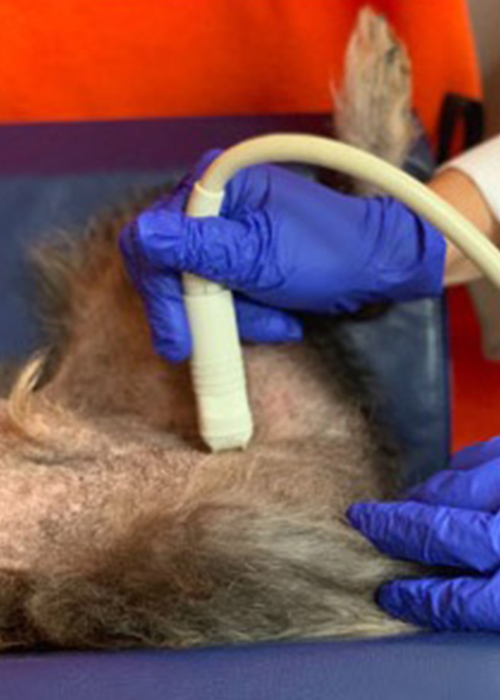
Treating prostate problems in dogs
Friday, January 17, 2020
Many of today’s pet dogs are neutered, but some owners keep their boys intact. Those intact dogs often experience problems with their prostate.
About 50 percent of intact male dogs experience age-related prostatic changes by the time they’re 4 years old. Such changes should be expected, to help put examination findings into perspective and prevent unnecessary treatments.
Broad clinical signs that a prostatic disease exists include: blood-tinged fluid on your pet’s bedding, changes in urination such as increased frequency, straining, interrupted streams of urine or blood, and constipation or straining to defecate. More serious clinical signs can also include significant depression and fever.
Benign prostatic hyperplasia (BPH) is the most common prostatic condition — the one that about 50 percent of intact male dogs will see by 4 years of age. And while most intact dogs eventually develop BPH, only a portion of those dogs will develop outward signs. Even if BPH is present, your pet should not experience pain or discomfort when a veterinarian is performing a digital palpation examination of the prostate per rectum. However, some pets simply detest this examination on merit alone.
Prostatitis, a bacterial prostate infection, is rare in neutered dogs; it’s much more likely in intact dogs. This infection can take the form of a sudden, acute case or a long-term, chronic case.
Clinical signs of chronic prostatitis are not always obvious. Signs that include back pain, abdominal pain, a hind-limb stiff gait or depression are significant quality of life concerns, and treatment should ensue. If no signs of discomfort exist, owners can debate the need for antibiotic therapy.
In acute cases of prostatitis, your pet may become systemically ill and a digital prostatic examination by a veterinarian will be painful. A brief hospitalization may be required to initially treat these cases, depending on your pet’s health.
Because prostatic fluid refluxes into the bladder, a simple urinary tract infection can be misdiagnosed in the presence of prostatitis. Antibiotic therapy aimed at treating a UTI is typically inadequate to treat a prostatitis; if UTIs recur, check for prostatitis.
Prostate cancer in dogs occurs most frequently in neutered males and is not dependent on the existence of sex steroid hormones from the testicles. Sadly, prostatic cancer tends to be highly aggressive and metastatic because it’s typically late, after the clinical signs have progressed. Treatments are palliative but not commonly pursued because of side effects and the late diagnosis.
Diagnosis of prostatic conditions may occur via digital palpation of the prostate, ultrasonographic examination and by collection of prostatic fluid for culture and microscopic evaluation. Evaluation of the prostate by these three methods will help your veterinarian determine if size changes or an infection is causing the abnormal clinical signs that you may be observing in your pet.
In the future, a diagnostic blood test assessing for a prostate-specific arginine esterase, currently available in Europe, will be available for veterinary use in North America. If you have questions about your dog’s prostate, consult your veterinarian.
STORY BY: Candace Lyman, DVM, DACT, an assistant professor of theriogenology in the Department of Veterinary Clinical Sciences at Oklahoma State University College of Veterinary Medicine.
